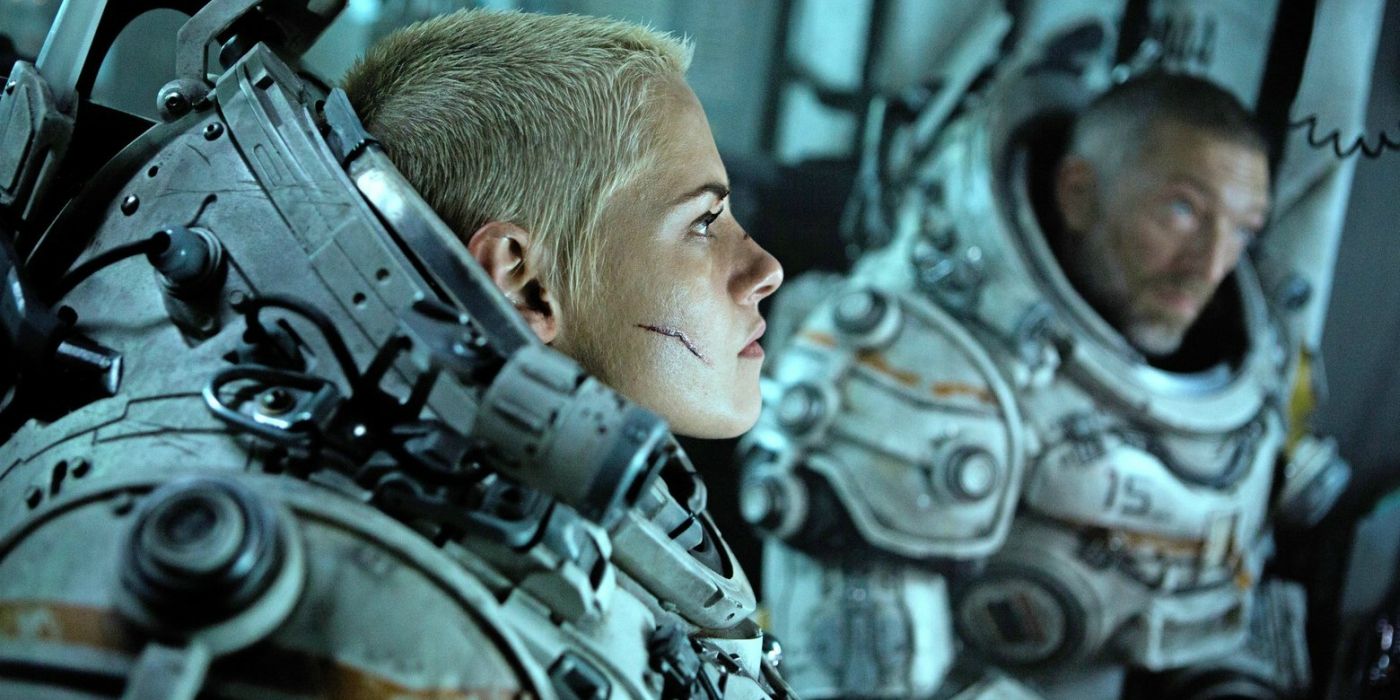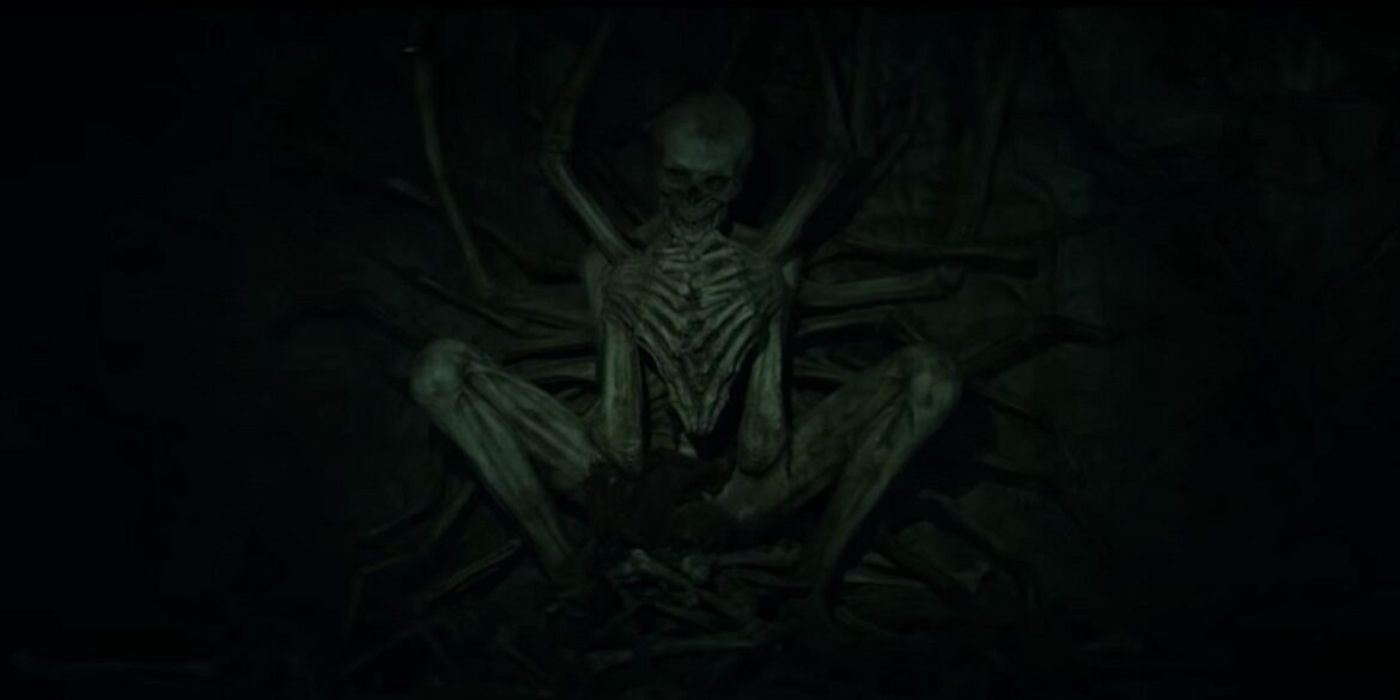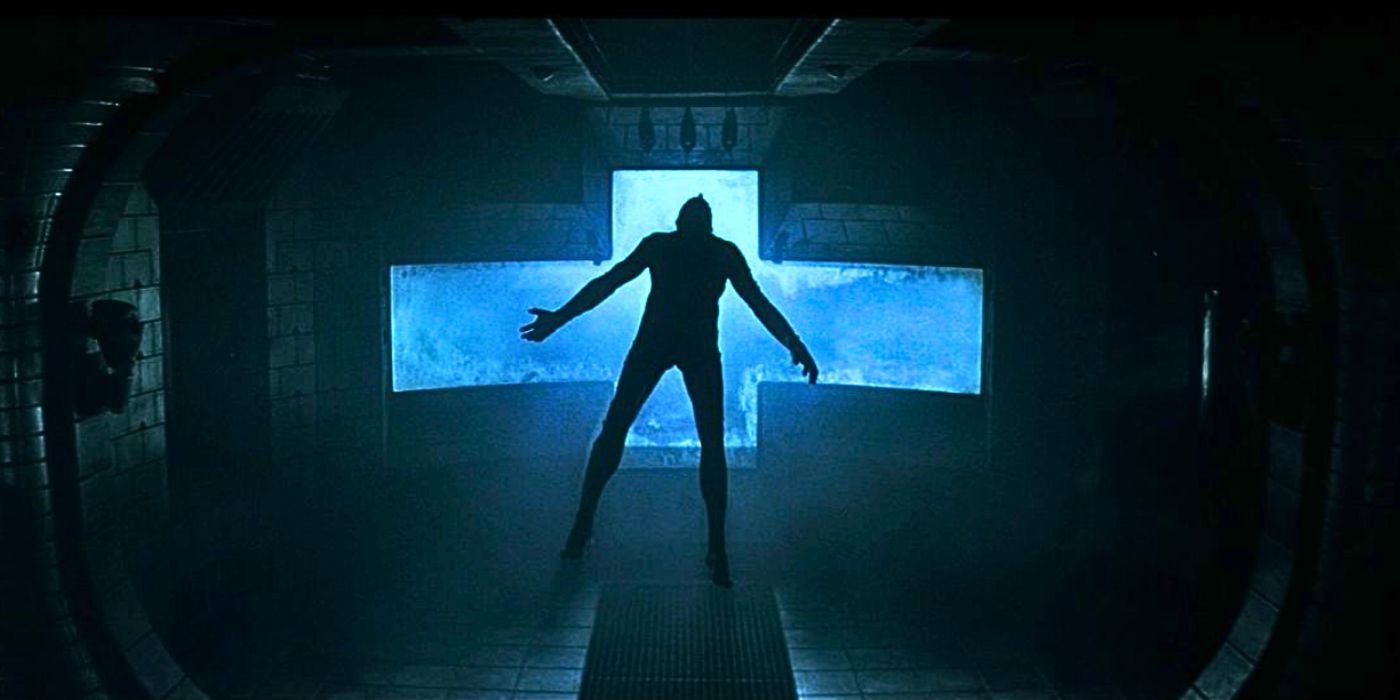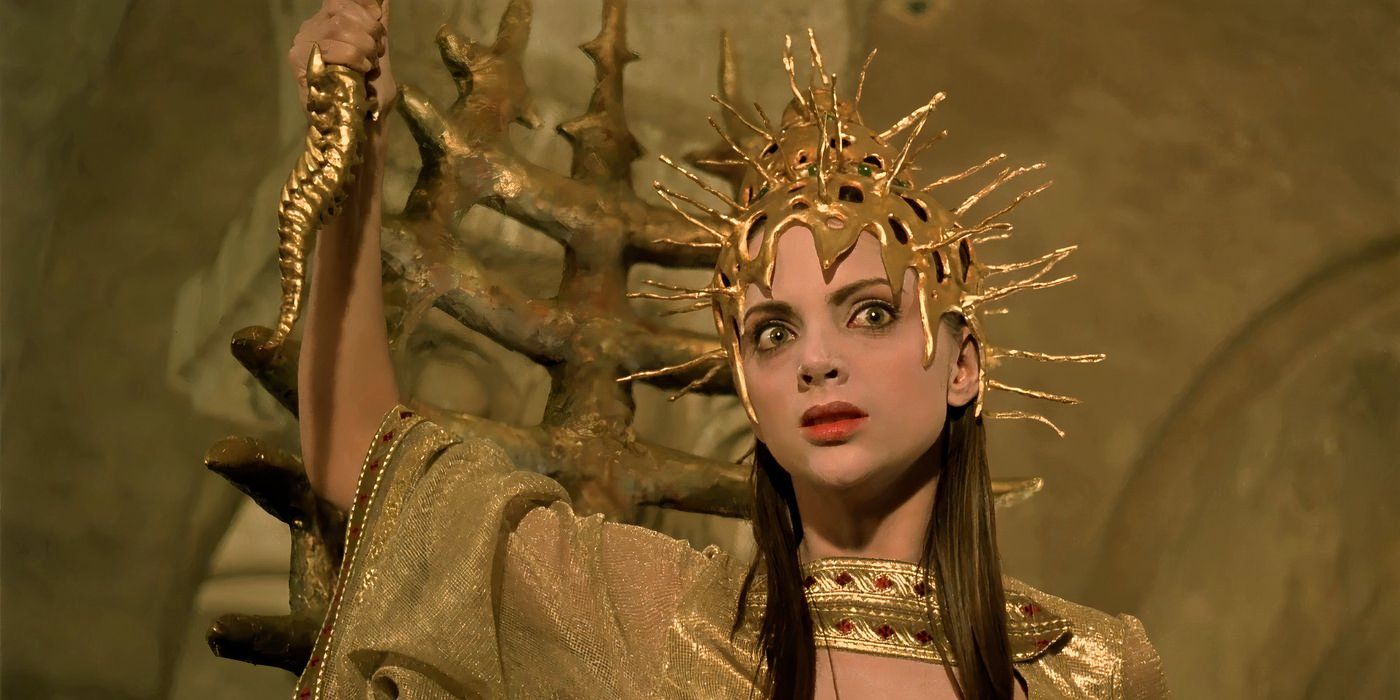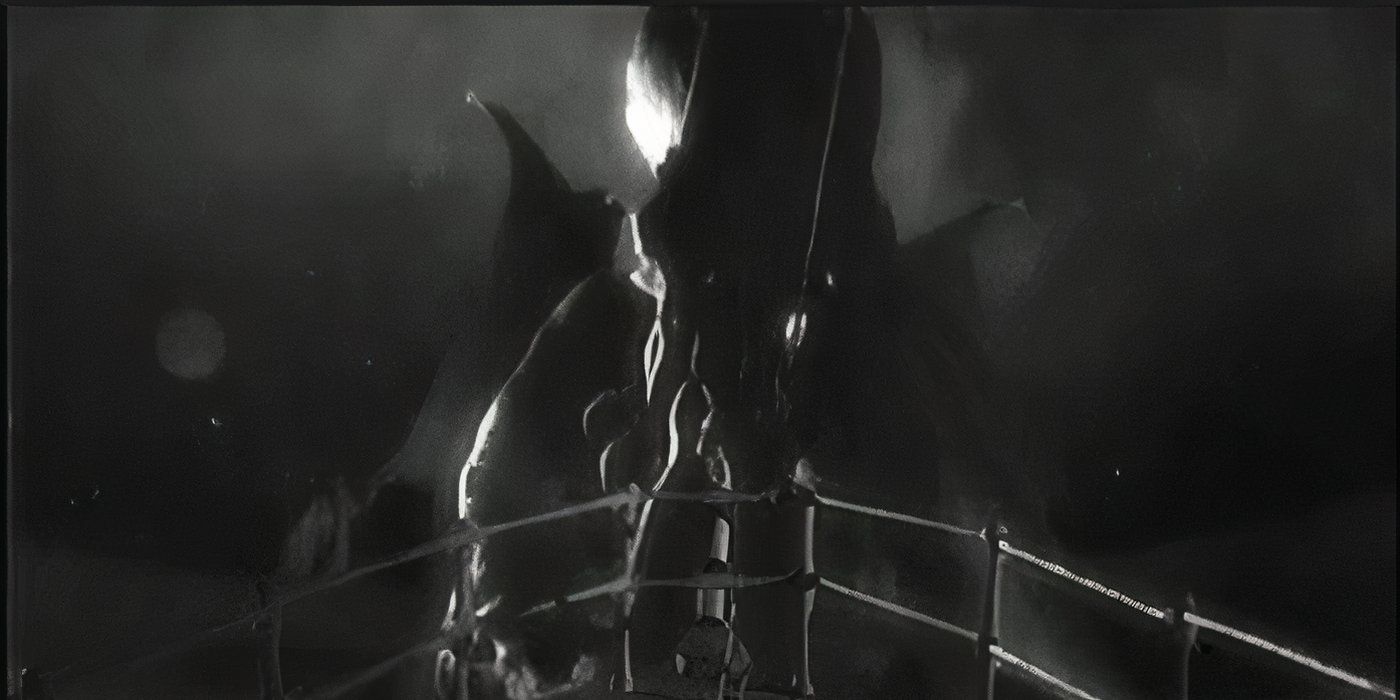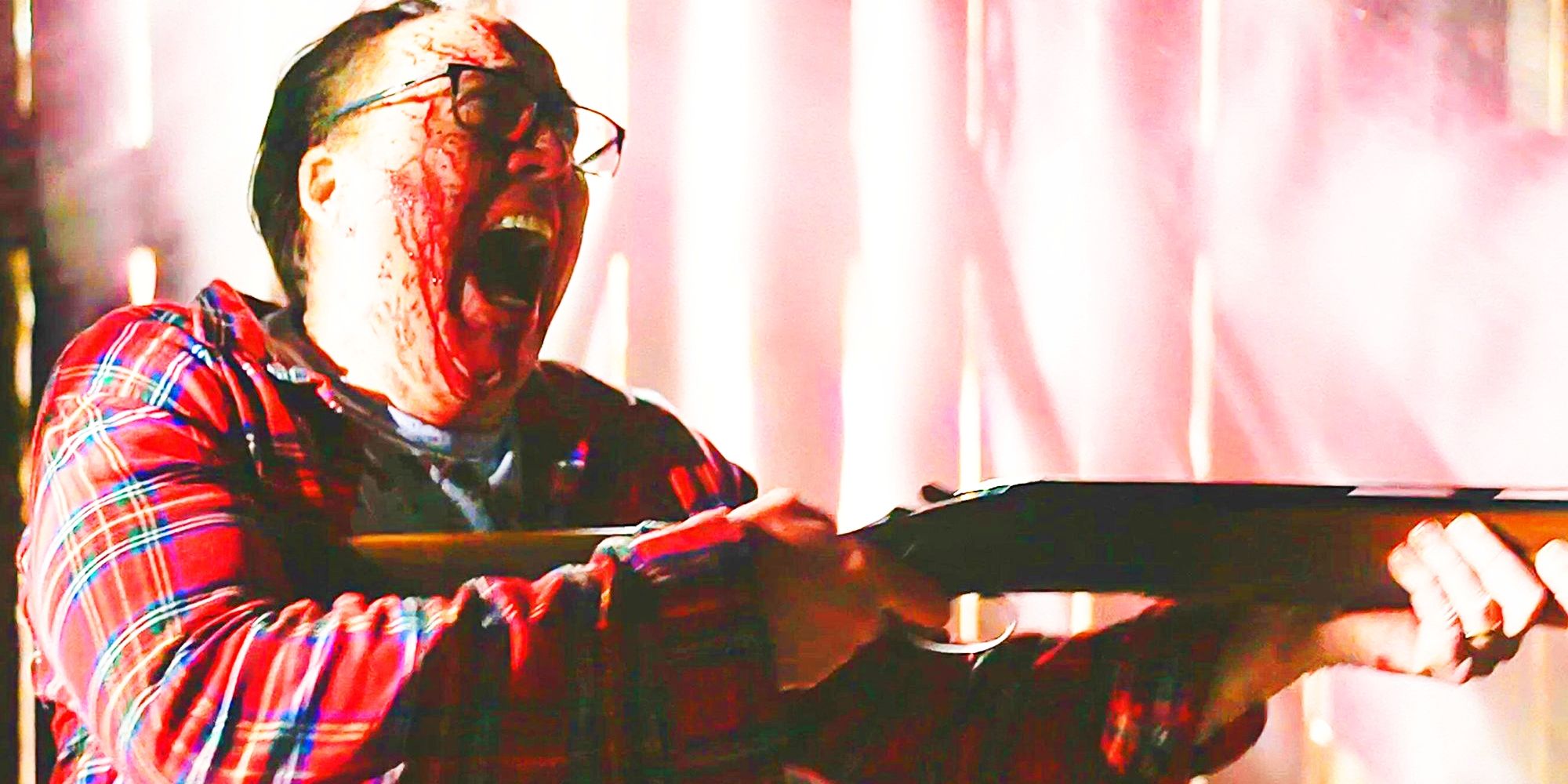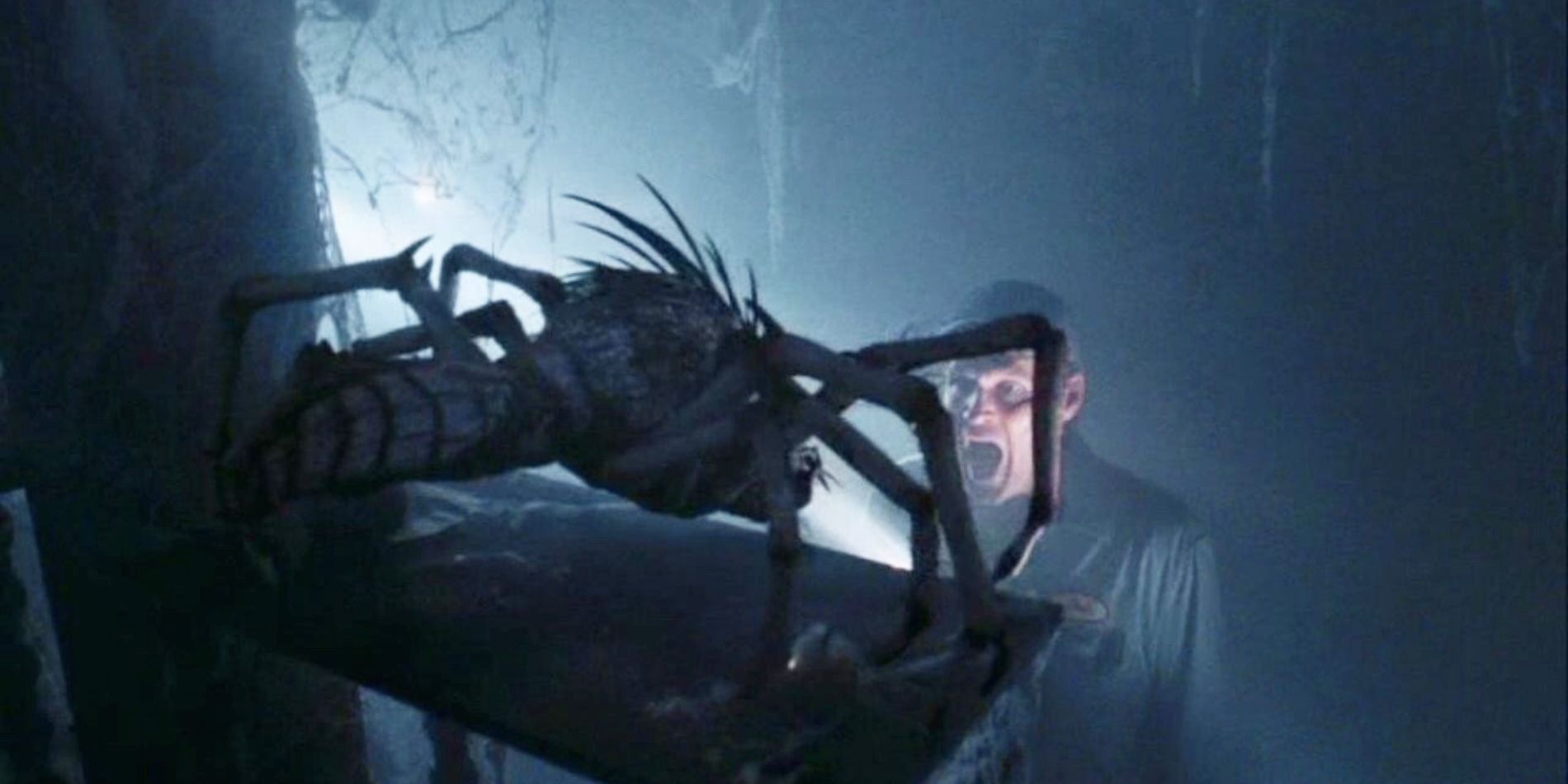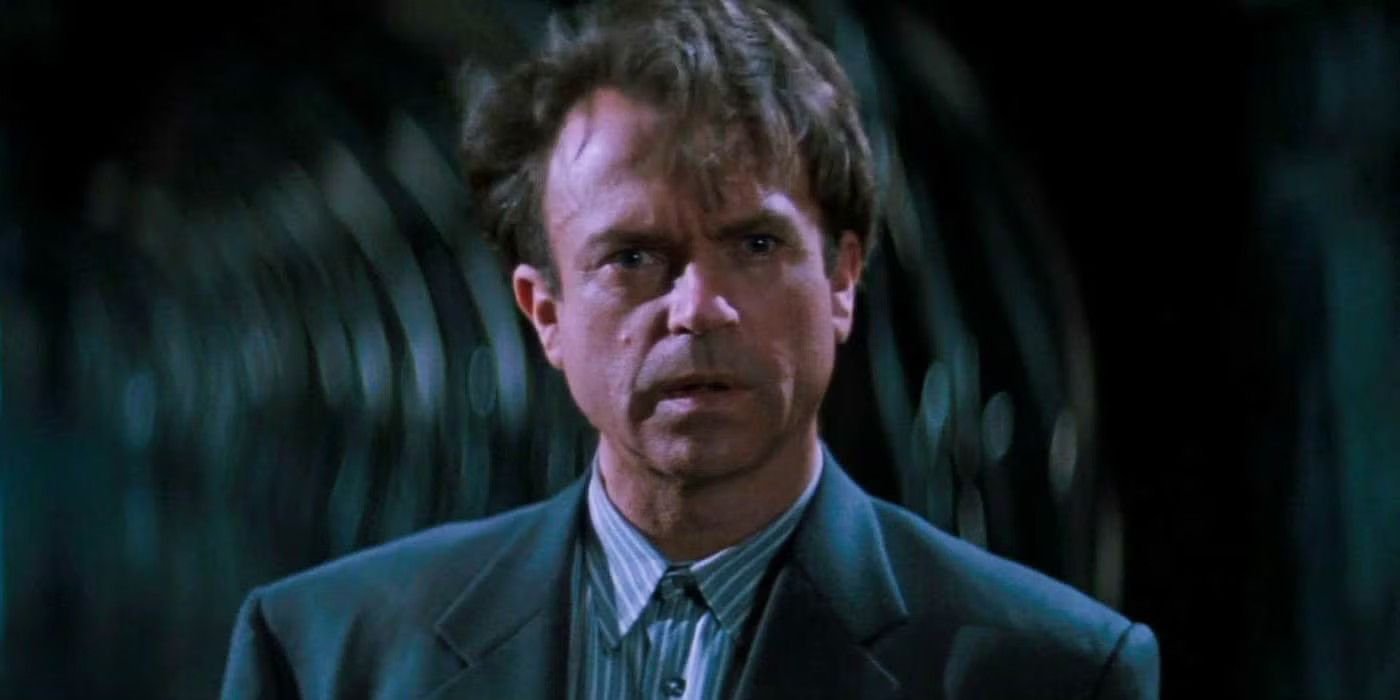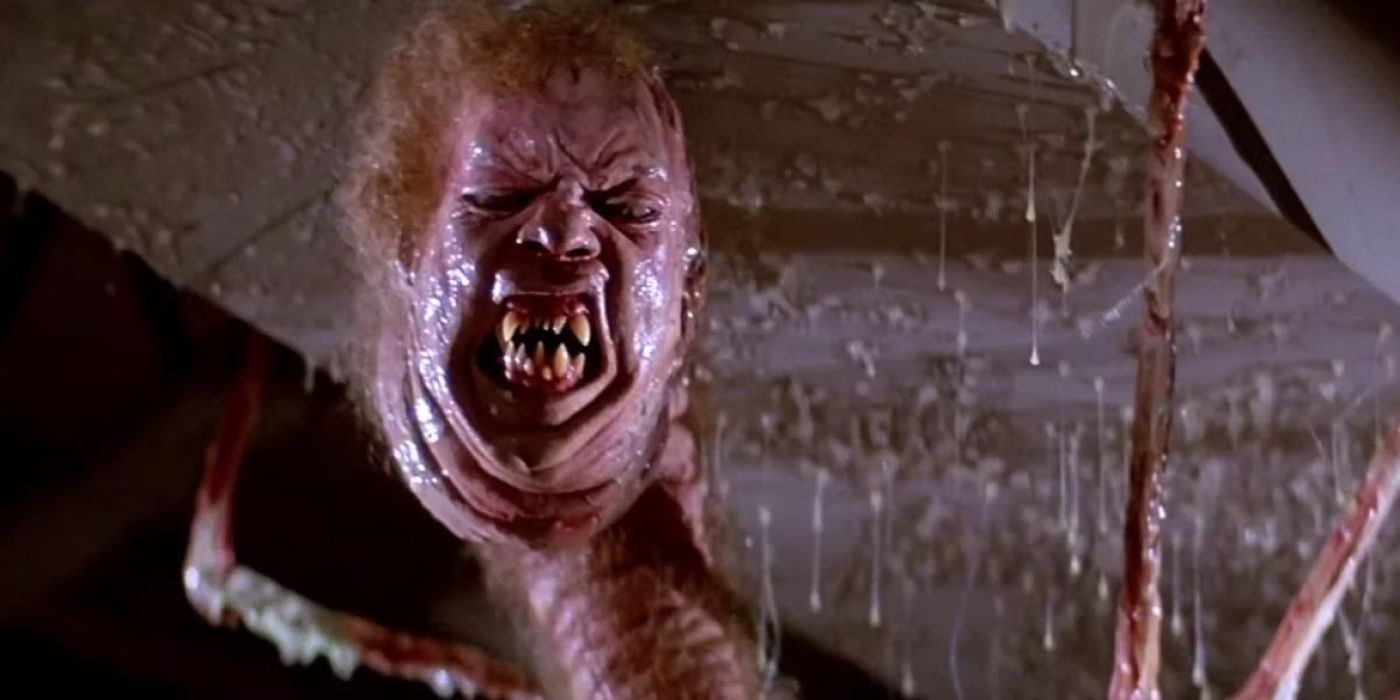10 Greatest Eldritch Horror Movies, Ranked

Rather than being about jump scares or serial killers, eldritch horror focuses on the terrifying vastness of the unknown, the insignificance of humanity, and the creeping dread that reality might be a lie. Pioneered by H.P. Lovecraft, the horror subgenre is all about ancient entities, scheming cults, and mind-warping revelations. It has gained a life of its own, especially for the terrifying and monstrous creations that it so often concocts.
Eldritch horror is a ton of fun when done right, but, unfortunately, the subgenre is packed with more duds than hits. Still, the movies below represent the best eldritch horror has to offer, from The Mist to The Thing. Wearing their influences on their sleeve and flaunting their nightmarish entities with pride, these movies prove that, in horror, the worst creations often mirror the darkness lurking within.
10
‘The Endless’ (2017)
Directed by Justin Benson and Aaron Moorhead
“You think you’re out, but you’re in.” Two brothers (played by co-directors Justin Benson and Aaron Moorhead) return to the cult they escaped years ago, only to find the people haven’t aged, the sky behaves strangely, and time itself is caught in a loop. From here, The Endless unfolds as a slow-burn gem of cosmic horror, where the monster is never fully shown but always felt. It’s about cycles, control, and the terrifying realization that you might not be living your life.
The more the brothers explore, the more reality begins to collapse. The same moments repeat, and they begin to suspect that the cult may not be the true threat. Impressively, The Endless makes its minimal elements (just a few people in a desert, really) feel colossal in their implications. It helps that the lead performances are authentic and believable, helping to ground the more mind-bending aspects.
9
‘Underwater’ (2020)
Directed by William Eubank
“We’ve drilled too deep.” In this one, a deep-sea research facility is struck by an earthquake, or something worse. Underwater wastes no time, throwing its characters into chaos from the first scene and never letting up. As the crew descends further into the ocean, they begin encountering creatures that suggest a deeper, more malevolent presence. The final act reveals a towering entity that all but confirms what Lovecraft fans suspected all along: this is Cthulhu’s domain.
Underwater marries pressure-cooker tension with abyssal terror. The crushing weight of the sea, the malfunctioning lights, the sound of distant groaning metal: everything builds toward a fittingly intense finale, a worthy payoff for all the buildup. Acting-wise, Kristen Stewart leads a strong cast (Vincent Cassel and John Gallagher Jr. also appear), showing off a slightly different side of her than we usually get. Despite all these strengths, Underwater was still a cataclysmic box-office bomb.
8
‘The Empty Man’ (2020)
Directed by David Prior
“The Empty Man isn’t a person. It’s a thought.” Grief, cults, cosmic horror, and urban legends converge in one of the most underseen horror gems of the past decade. In The Empty Man, James Badge Dale plays an ex-cop drawn into a strange case involving missing teens and whispers of a creature known as the Empty Man. But the deeper he digs, the more the world begins to unravel. The story begins as a supernatural murder mystery but evolves into something more philosophical and vast.
The film’s brilliance lies in its ambition, its willingness to link trauma, belief, and unknowable entities into a cohesive narrative that rewards close viewing. The atmosphere is suffocating, the lore is intricate, and the final reveal is devastating. The ideas at play here are fairly big-brain, including the notion that consciousness itself might be manipulated by an extradimensional thought-form. It’s much more intelligent than most Lovecraftian fright-fests.
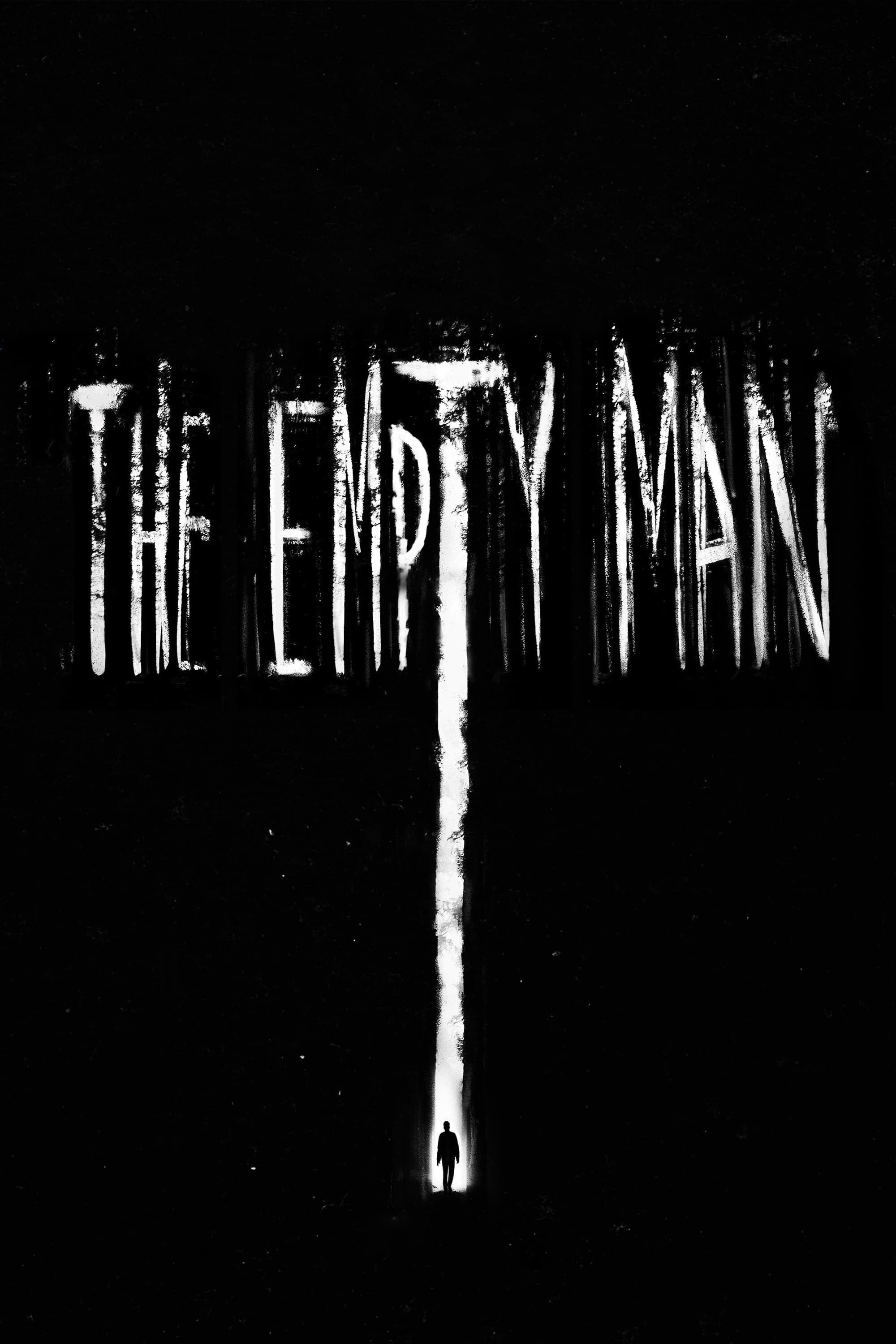
The Empty Man
- Release Date
-
October 23, 2020
- Runtime
-
137 Minutes
- Director
-
David Prior
7
‘Event Horizon’ (1997)
Directed by Paul W.S. Anderson
“Where we’re going, we won’t need eyes to see.” A spaceship vanishes beyond the known universe, only to return with something unspeakable onboard. Event Horizon combines sci-fi with hellish surrealism, turning its haunted ship into a vessel of pure dread. Eldritch horror thrives on the unknown, and here, space itself becomes a conduit for damnation. We watch as the crew members are undone, mentally and spiritually. All this could have become cheesy were it not for the talents of stars like Laurence Fishburne and Sam Neill.
The premise is killer and the jump scares are effective, but it’s the sense of dread, the implication that another dimension of pure suffering lies just beyond sight, that lingers. In the end, Event Horizon doesn’t explain everything, and that’s the point. Its evil is metaphysical, an infection of the soul; in a word: demonic. Underappreciated on release, Event Horizon has rightly become a cult favorite.
6
‘Dagon’ (2001)
Directed by Stuart Gordon
“The sea doesn’t let you go.” Based on Lovecraft’s The Shadow Over Innsmouth, Dagon traps a man in a decaying Spanish fishing village where the locals worship ancient sea gods. Kind of a goofy conceit, but the execution is solid. Director Stuart Gordon (of Re-Animator fame) leans into the madness, crafting a town where the past can’t be buried, and the future is inhuman. The film oozes with rot and paranoia, its creatures grotesque, and its themes deeply uncomfortable.
The plot begins with a shipwreck but quickly morphs into a living nightmare, as the protagonist discovers the town’s horrific secret: they have traded their humanity for power, survival, and transformation. The makeup and practical effects are disturbingly tactile, and the tone is just the right kind of unsettling. Plus, beneath the surface is a critique of blind faith and inherited sin. The ocean offers immortality, but at a cost so great, it’s barely conceivable.
5
‘The Call of Cthulhu’ (2005)
Directed by Andrew Leman
“In his house at R’lyeh, dead Cthulhu waits dreaming.” Filmed as a silent movie in the style of the 1920s, this low-budget passion project might be the most faithful Lovecraft adaptation ever made. The Call of Cthulhu captures the creeping dread of Lovecraft’s source material. It’s big on forbidden knowledge and the cosmic insignificance of man. The handmade charm only adds to the eeriness, proof that you don’t need a massive budget to convey existential terror.
By mimicking the silent film era, the film channels the atmosphere of Lovecraft’s time, adding a sense of historical weight and distance. The story, about an investigator (Matt Foyer) piecing together accounts of a cult and a slumbering god, unfolds with mythic pacing and uncanny visuals. It doesn’t rely on gore or jump scares but on suggestion and subtle terror. In many ways, this version of The Call of Cthulhu is the essence of eldritch horror distilled.
4
‘The Color Out of Space’ (2019)
Directed by Richard Stanley
“It’s in the water. It’s in me.” The Color Out of Space is technicolor terror, a radiant infection from beyond the stars, turning beauty into body horror and wonder into panic. A meteor crashes on a remote farm, and everything begins to change: Time warps, animals mutate, and people unravel. Nicolas Cage, in one of his better recent performances, anchors this psychedelic descent into madness, adapted from one of Lovecraft’s most disturbing tales.
Richard Stanley‘s direction emphasizes both the gorgeous and the grotesque, bathing the film in neon purples and sickly hues that suggest reality is losing definition. The force that infects the land doesn’t want anything. It simply exists, and its presence is incompatible with life as we know it. Watching it is like witnessing cancer grow in the fabric of the world. The result is one of the most visually arresting and spiritually corrosive Lovecraftian adaptations in modern cinema.
3
‘The Mist’ (2007)
Directed by Frank Darabont
“There’s something in the mist!” After a strange storm, a dense mist rolls into town, carrying with it creatures that should not exist. Trapped in a grocery store, a group of survivors grapples not only with monsters but with fear, paranoia, and religious hysteria. These story elements are fairly pulpy, but Frank Darabont marshals them into a masterclass in dread, culminating in one of the bleakest endings in horror history. Sometimes the scariest thing isn’t what’s out there; it’s what panic does to people.
In the process, Darabont elevates Stephen King‘s novella into an almost mythic parable of human weakness in the face of the unknowable. The monsters are terrifying, but it’s the collapse of social order, the rise of cult-like thinking, and the sacrifices made out of fear that give the film its devastating impact. And then there’s that ending: cruel, abrupt, unforgettable. Brilliantly grim stuff.
2
‘In the Mouth of Madness’ (1994)
Directed by John Carpenter
“Do you read Sutter Cane?” In this underrated John Carpenter outing, a literary investigator (Sam Neill) searches for a missing horror author, only to discover that the line between fiction and reality has collapsed. In the Mouth of Madness is Carpenter’s tribute to Lovecraft, blending metafiction with madness. It’s not just about losing your mind—it’s about the idea that stories themselves can shape the world, and that the truth might be written by something far older than God.
The film is filled with subtle distortions, impossible architecture, and nightmarish logic loops. Reality is rewritten in real time, and the viewer is dragged down with the protagonist. By the end, it’s not clear what’s fiction anymore, or if that distinction ever mattered. Neill gives one of his most manic performances here, charting a descent from skepticism to total unraveling. Overall, the movie is flawed but enjoyable, and certainly worth checking out if you’re a fan of this subgenre.
1
‘The Thing’ (1982)
Directed by John Carpenter
“I don’t know who to trust.” If In the Mouth of Madness is Carpenter’s uneven but fun take on eldritch horror, The Thing is the genre’s apotheosis. It’s the ultimate paranoia machine, a story of distrust, isolation, and monstrous transformation. In the frozen isolation of Antarctica, a shapeshifting alien begins to imitate the crew of an American research station. Every grisly death feeds into the fear that everything is a possible deception and no one can be trusted. Many movies play with the idea that one of the protagonists is a villain in disguise, but The Thing takes it to the extreme.
Rob Bottin‘s practical effects are legendary, giving form to a creature that defies biology and logic. Still, it’s the psychological breakdown that really elevates the film. As the alien picks them off one by one, the men respond not by banding together but by turning on each other. The final shot, cold and ambiguous, suggests that the real infection isn’t the monster but the doubt it leaves behind.
